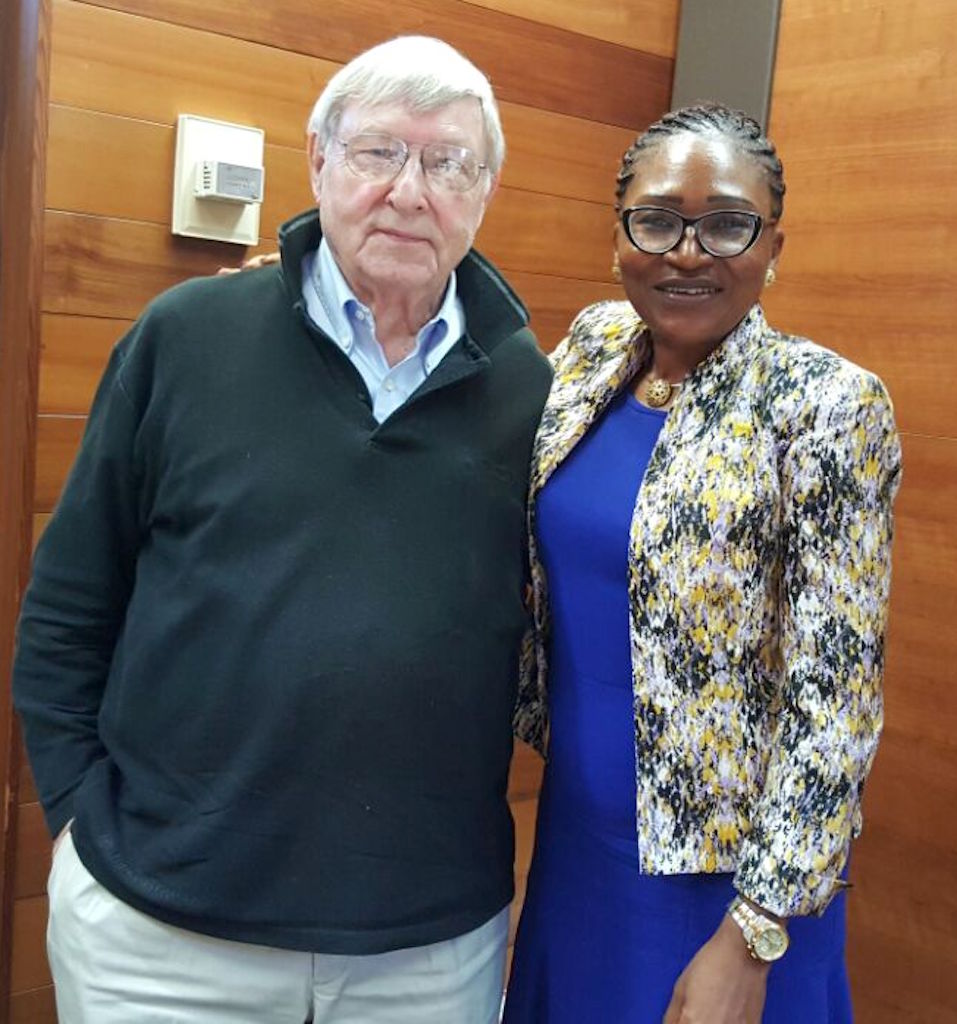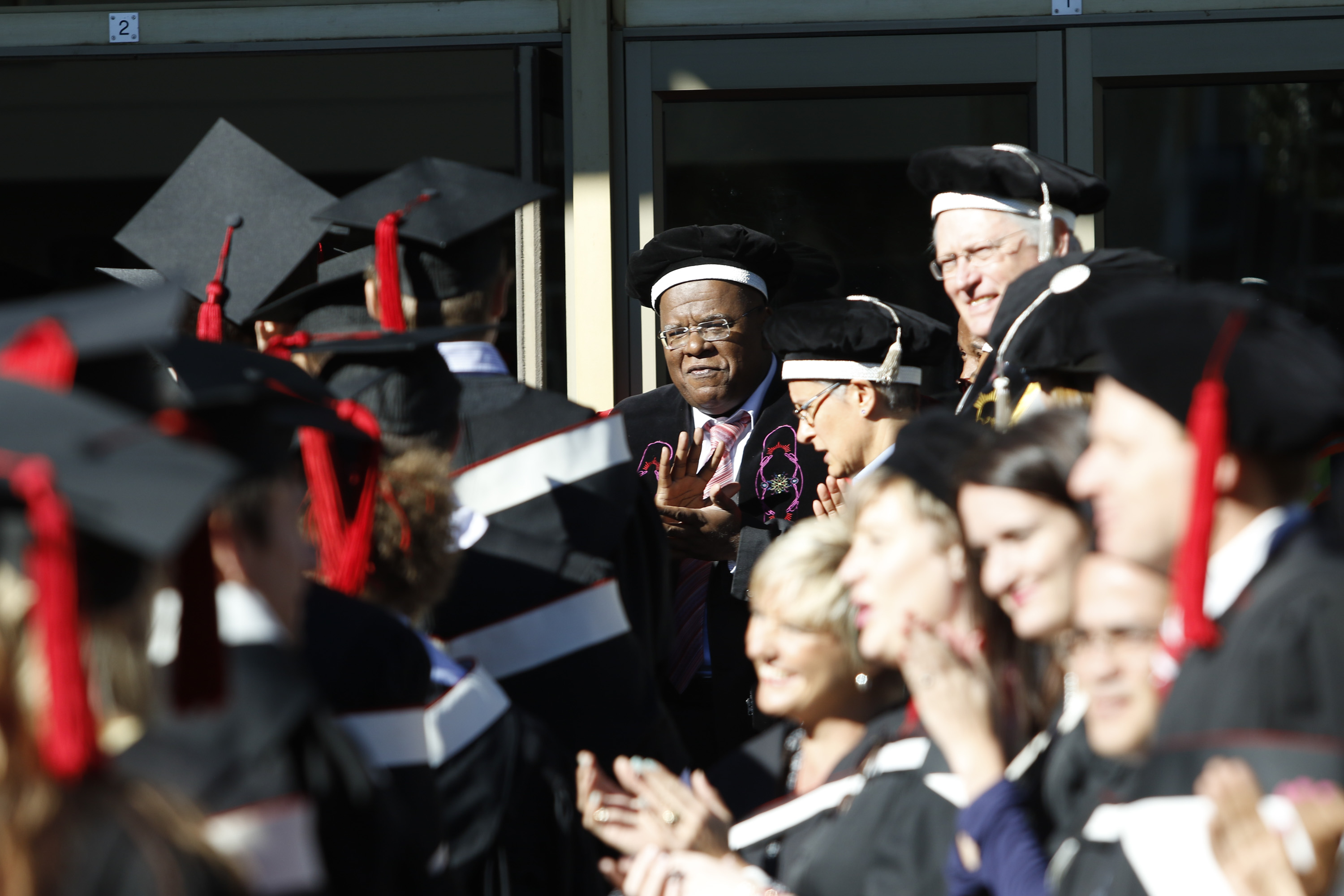International development education was transformed by a program whose interdisciplinarity and global reach anticipated the Stanford of today

Leo Holub/Stanford University Archives
All benefit from an innovative Stanford program founded in the idealistic 1960s that continues to shape global education today.
The Stanford International Development Education Center (SIDEC) and its successor, the Graduate School of Education’s International Comparative Education (ICE) program, have trained generations of policy makers, ministers of education and heads of state since SIDEC’s founding in 1964. Alumni and faculty include the presidents of the Maldives (Mohammed Waheed Hassan, MA '80, MA '85, PhD '87) and Guatemala (Jorge Serrano Elias, MA ’73); two directors of UNESCO’s institute of educational planning, the IIEP (Prof. Hans Weiler and his student Suzanne Grant Lewis, PhD ’88); the inaugural recipient of the Yidan Prize in Education Development (Vicky Colbert, MA ’73) and founders of similar programs in at least 13 universities.
SIDEC/ICE is the oldest extant program of its kind. In its interdisciplinarity and global reach, it pioneered key Stanford practices that distinguish the university today.
Addressing the century's complexity
SIDEC was founded by Education Prof. Paul Hanna (1902-1987), a curriculum specialist who wrote some of America’s first interdisciplinary K-12 social studies textbooks and built a revolutionary Frank Lloyd Wright house on campus.
Hanna himself was not a comparative scholar, notes economist Prof. Martin Carnoy, whom Hanna hired for SIDEC in 1968. Rather, as a liberal torch-bearer of the Cold War, Hanna believed passionately in U.S. democratic values. Profoundly influenced by educational philosopher John Dewey, he believed in the power of education to shape social behavior toward a better future. He saw the problems of the 20th century as too complex for discipline-based scholars to address in isolation or for educational practitioners to tackle without social science training.

Most crucially for SIDEC’s success, Hanna was a tireless fundraiser and networker with a global ability to work contacts.
Watch video of Martin Carnoy discussing SIDEC's impact at the GSE's Stanford Historical Society event.
Hanna conceived of SIDEC as training “scholar-doers,” young men and women from the U.S. and abroad who would disseminate democratic values through teaching, research, consulting, management and policy work. Like many Stanford entities that emerged in the 1950s and 60s, SIDEC drew robust funding from outside sources, notably the Ford Foundation. It aligned with the university’s midcentury mission of creating “steeples of excellence” that would propel Stanford into the ranks of top research universities.
“The real secret of SIDEC’s success was the quality of the students,” said political scientist and emeritus Prof. Hans Weiler, whom Hanna brought to SIDEC in 1965. “Paul already attracted a group of very interesting students. They were very impressive people with background in development work, political and managerial experience. We built on that basis and we went nowhere but up.”
Prof. Robert Textor, an anthropologist, created the program’s interdisciplinary social science seminar. Unlike many master’s programs at the time, the MA required a thesis, and still does. SIDEC PhD students, in addition to significant work experience, had to have a master’s degree in a social science.
“We have been quite sensitive to reproducing the SIDEC model, its core principle being the intersection of social-science fields with education,” said Nelly Stromquist, PhD ’75, longtime professor of education at the University of Southern California and now H.R.W. Professor of International Education at tthe University of Maryland, College Park.
“Many aspects of educational systems have to be questioned,” Stromquist said. “Different fields contribute different lenses and ask us to be aware of different forces in society.”
SIDEC faculty and scholars made theoretical advances that shaped the field, such as Prof. Francisco Ramirez PhD ’74’s work on world society theory with his mentor, Stanford sociologist John Meyer, that helped identify and explain global trends in educational objectives.

Empowering students
Some students gravitated toward SIDEC/ICE for its intellectual ferment even though their career interests lay elsewhere.
Gary Mukai, MA ’81, came to the School of Education intending to become a curriculum specialist, but chose SIDEC because the diverse perspectives of students and scholars there piqued his curiosity on how to learn from cultural difference.
“In Martin’s class, I remember reading a book on dependency theory by Fernando Henrique Cardoso,” said Mukai, now director of the Stanford Program on International and Cross-Cultural Education (SPICE). “He introduced this idea of the periphery and the core, with the U.S. and Europe as the core, the periphery being ‘the Third World,’ as it was called then.
“Those things were really new to me. They weren’t at all new to my classmates from Latin America.”
Other students intended to become internationalists, but were empowered by the skills SIDEC/ICE gave them to pursue unexpected paths.
“I picked ICE because it allowed me to continue my studies of World War II history textbooks,” said Tiffany Price, MA ’00. “Even though I had this hyper-focus on international curriculum, ICE is part of the policy studies program at Stanford, so I learned a lot about doing research.
“I was hired by SRI and worked there for almost six years, doing educational policy research on issues like charter schools, the small-schools movement and teacher quality.”
The program’s network of contacts snowballed as years passed. Weiler left in the 1970s for three years to become director of UNESCO’s institute of educational planning in Paris. His student, SIDEC graduate Suzanne Grant Lewis, PhD ’88, holds that position today.
The international students educated with foundation money, especially in Latin America and Southeast Asia, further spread the School of Education’s influence around the globe.
“I was able to gain a lot of friends for SIDEC,” Weiler said of his years at UNESCO. “When I came back in 1977, that accrued a lot of financial support. Martin was successful in attracting big Ford support for a master’s program for Latin American students. Jack Bock, PhD ’71, built up a program for Southeast Asian educators. I did a program for Francophone West Africa.
“Together, we did the groundwork for a lot of institution-building in these three areas. We had quite a bit of long-term effect.”

In 1994, the program was reorganized into a larger administrative unit within the School of Education and renamed ICE. The curriculum remained constant.
Today, Christine Min Wotipka, MA ’99, PhD ’01, oversees the ICE and International Education Policy Analysis MA program and studies the increasing world attention to girls’ education and to women’s rights. Prof. Prashant Loyalka, ’97, MA ’08, PhD ’09, specializes in impact evaluation and assessment in China and India. Prof. Patricia Bromley, PhD ’11, returned to ICE in 2015 as an organizational sociologist. ICE’s Lemann Center trains Brazilian education policy analysts in ICE’s MA and PhD programs, does policy research in Brazil and works with the GSE’s Learning Sciences and Technology Design program to develop sophisticated science teaching using maker technologies.
Learn more from alumni Margaret Kilo and Leila Ehsani-Tanyi.
Read Suzanne Grant Lewis’ tribute to Hans Weiler on his 80th birthday.
-- Barbara Wilcox
Top photo: Jonathan Jansen, PhD '91, presides over Commencement at the University of the Free State in South Africa, where he recently retired as vice-chancellor. Jansen remains one of his country's foremost public intellectuals.
